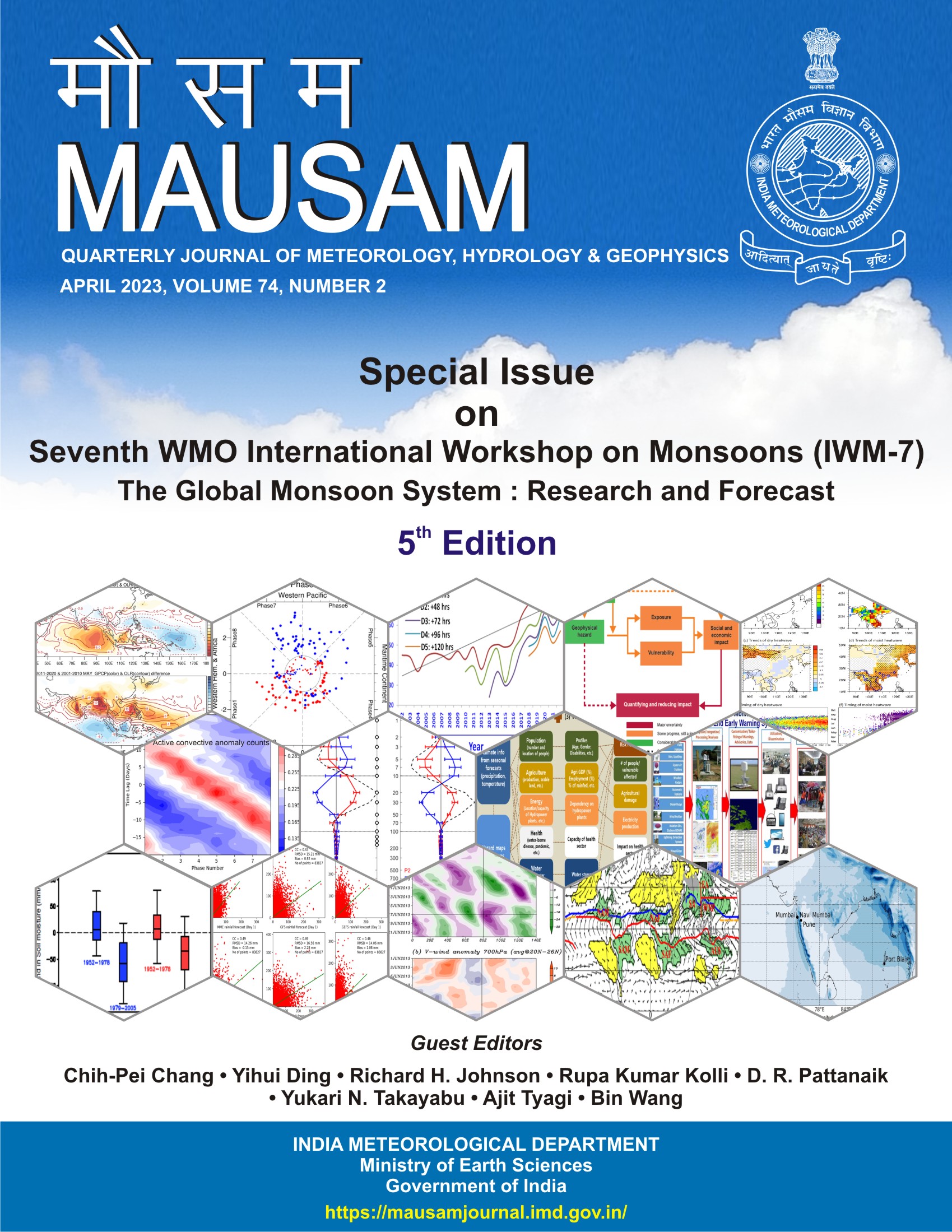Short to medium range impact based forecasting of heavy rainfall in India
DOI:
https://doi.org/10.54302/mausam.v74i2.6180Abstract
There have been major advances in the last few decades in our understanding of heavy rainfall during monsoon season due to substantial progress in both observation and numerical modelling of monsoon. All these resulted in more accurate forecast of heavy rainfall in short to medium range, (upto five days) with 40% improvement in accuracy of heavy rainfall forecast in recent five years (2018-2022) as compared to previous five years. However, improvement of forecast and warning skill is not sufficient to minimize damage to lives and property. It is essential to extend to hazard forecast systems (hazard models) and then to impact and risk assessment with stakeholder interaction for risk based warning (RBW) and response action to protect lives and livelihoods
Considering all these, India Meteorological Department (IMD) has introduced impact based forecast (IBF) for heavy rainfall at meteorological sub-division level since July 2013 and at district and city scale in August, 2019 in its short to medium range forecasts and nowcasts indicating the likely impact of the heavy rainfall in different sectors and required response actions. Thereafter the IBF of heavy rainfall has undergone several changes over the years. Currently, the IBF being implemented by IMD includes all the four components, viz., (i) meteorological hazards, (ii) geophysical hazards, (iii) geospatial applications and (iv) socio-economic conditions and it utilises a web-GIS based decision support system (DSS). In this study we have reviewed various approaches and stages of development of IBF of heavy rainfall in India. The success of IBF of heavy rainfall will enhance the management of critical resources like agriculture, water & power and support urban and disaster management sectors among others while reducing loss of life and property.
Published
How to Cite
Issue
Section
License
Copyright (c) 2023 MAUSAM

This work is licensed under a Creative Commons Attribution-NonCommercial 4.0 International License.
All articles published by MAUSAM are licensed under the Creative Commons Attribution 4.0 International License. This permits anyone.
Anyone is free:
- To Share - to copy, distribute and transmit the work
- To Remix - to adapt the work.
Under the following conditions:
- Share - copy and redistribute the material in any medium or format
- Adapt - remix, transform, and build upon the material for any purpose, even
commercially.



